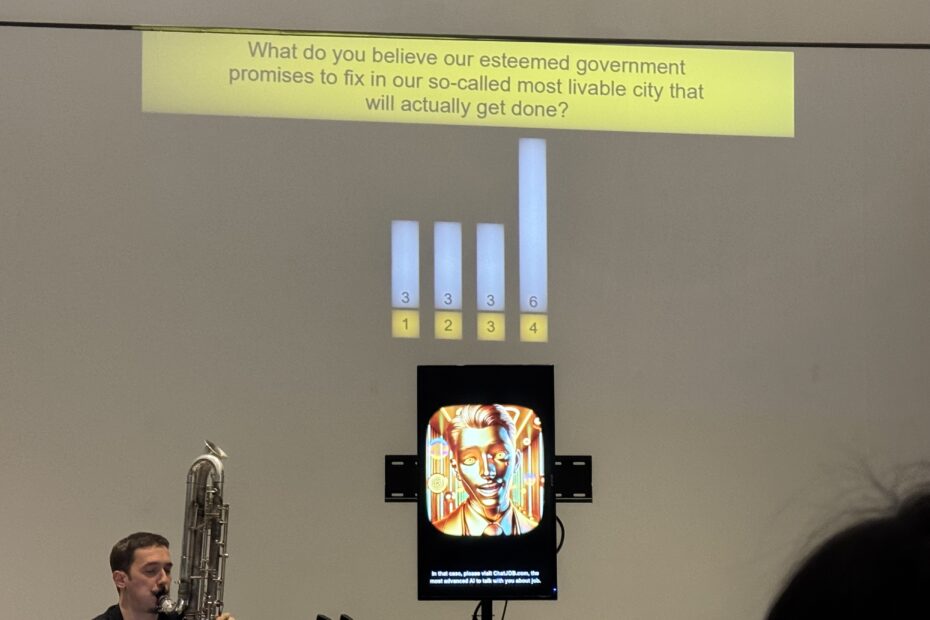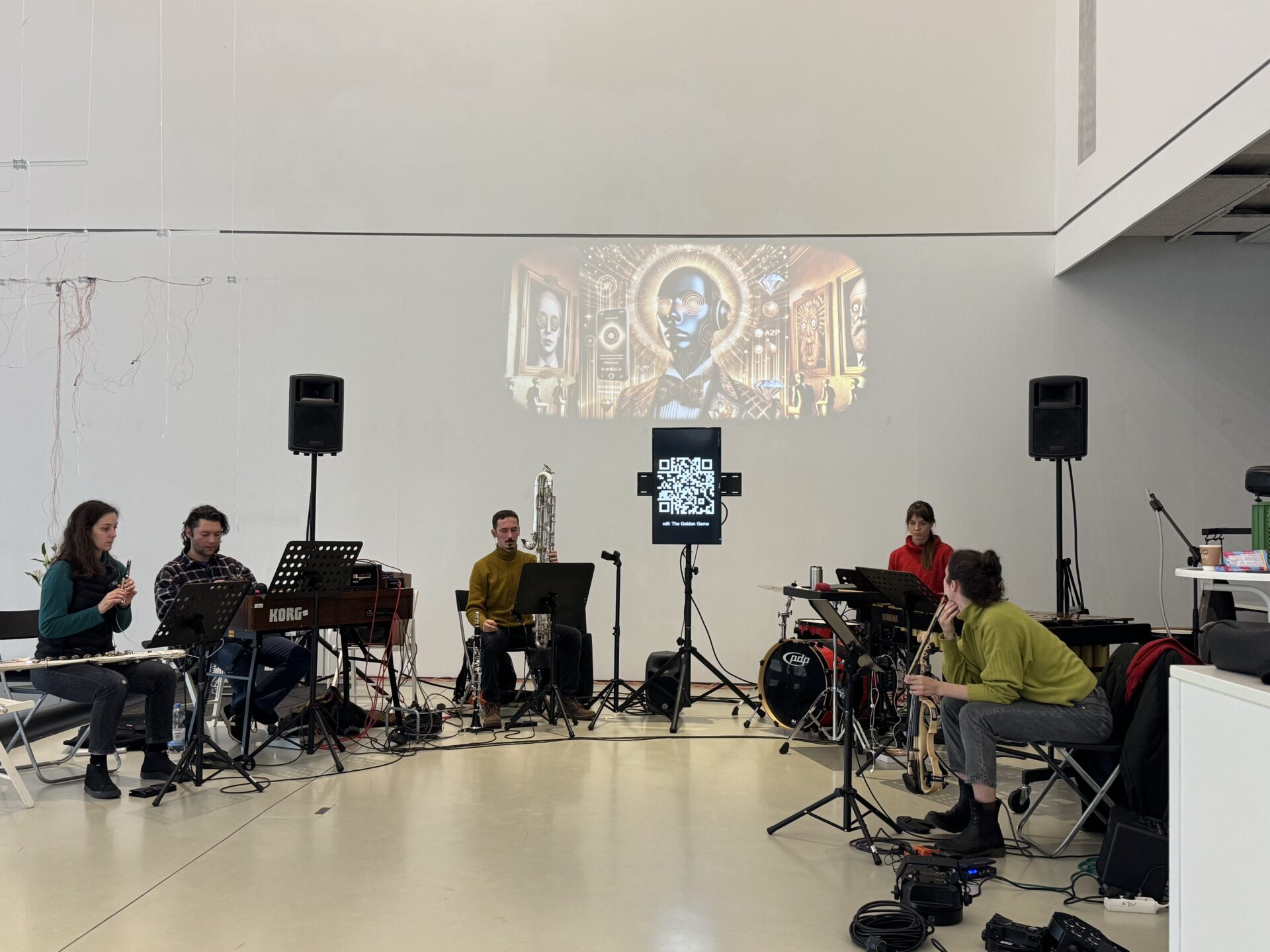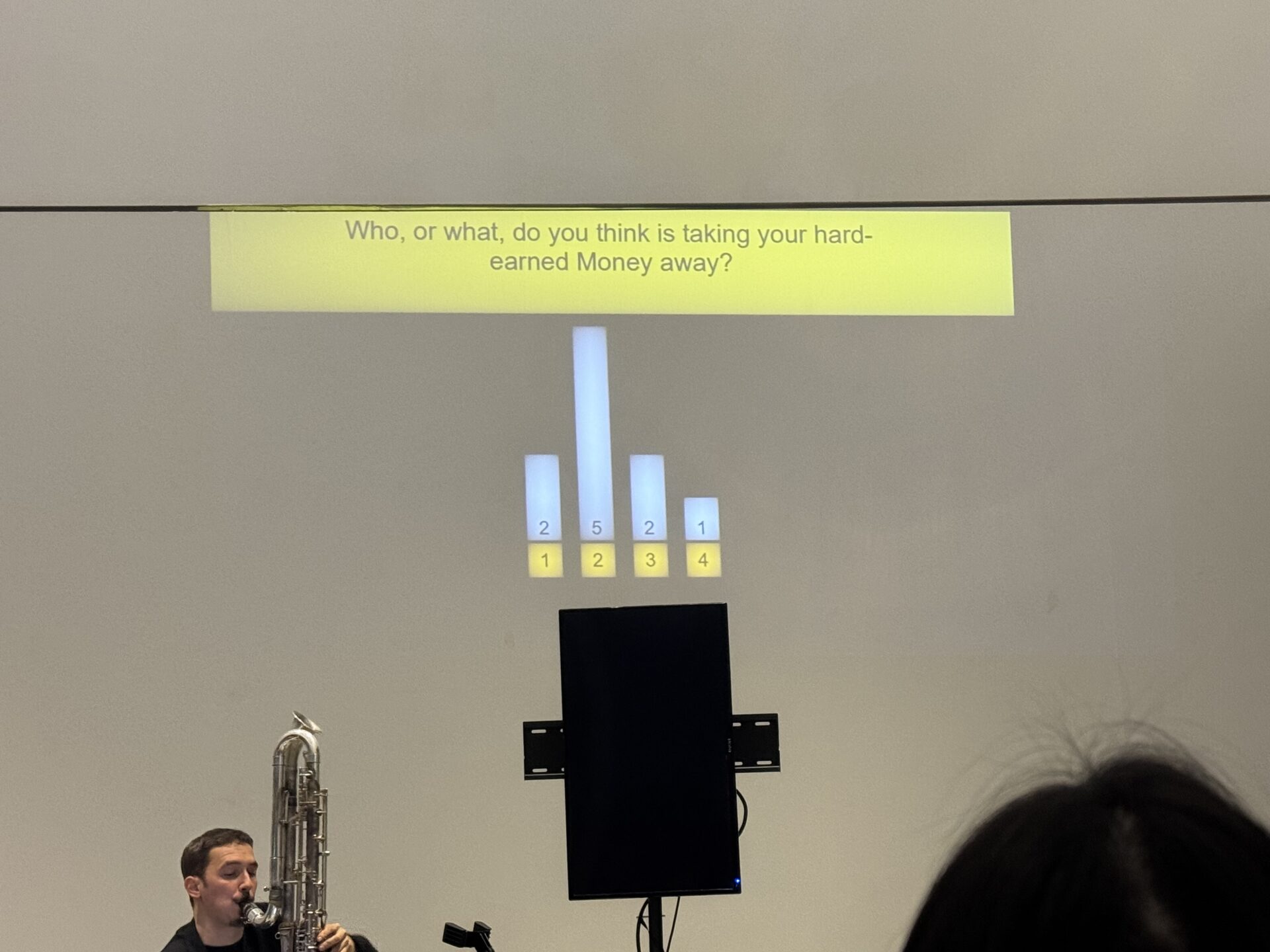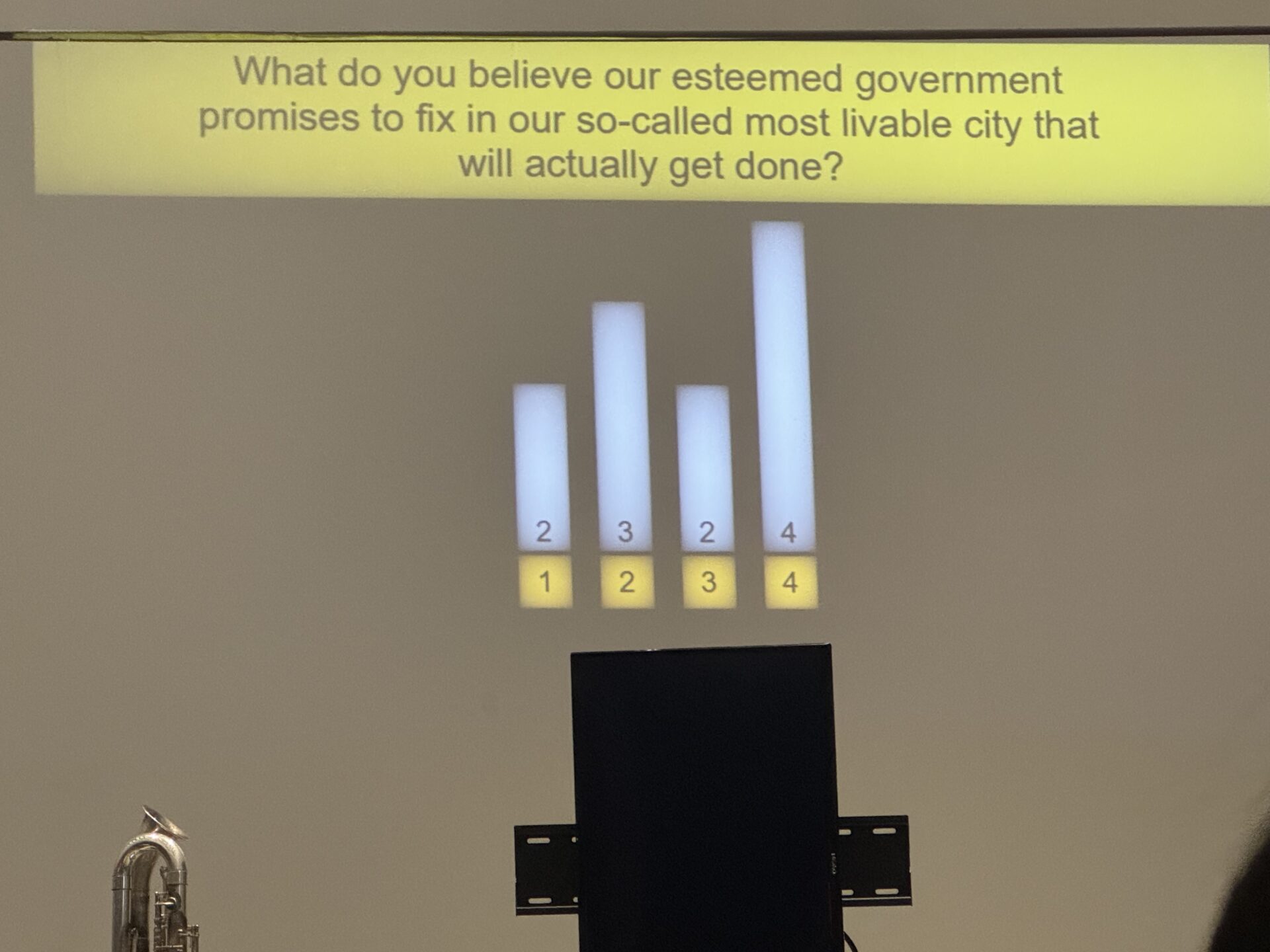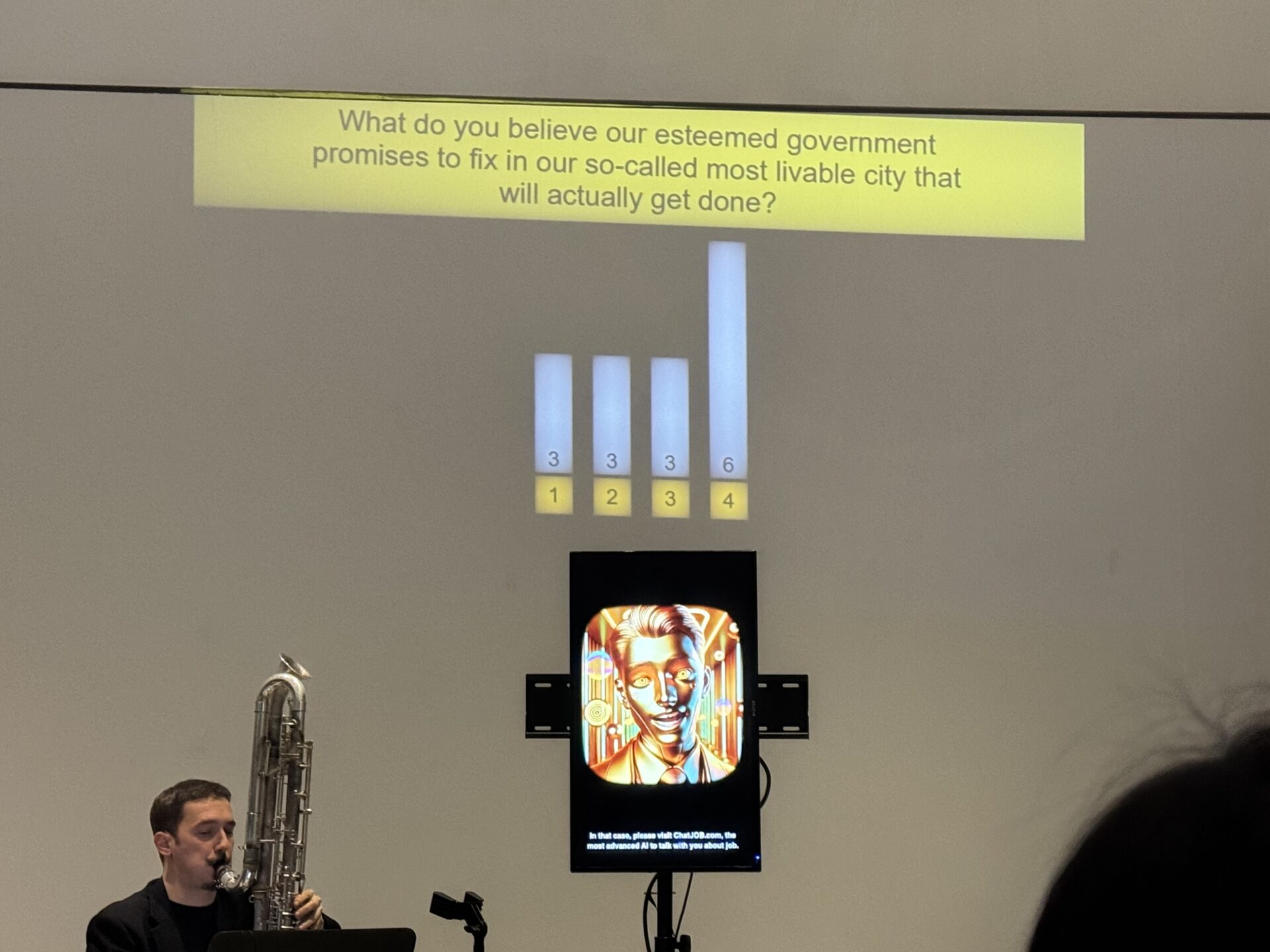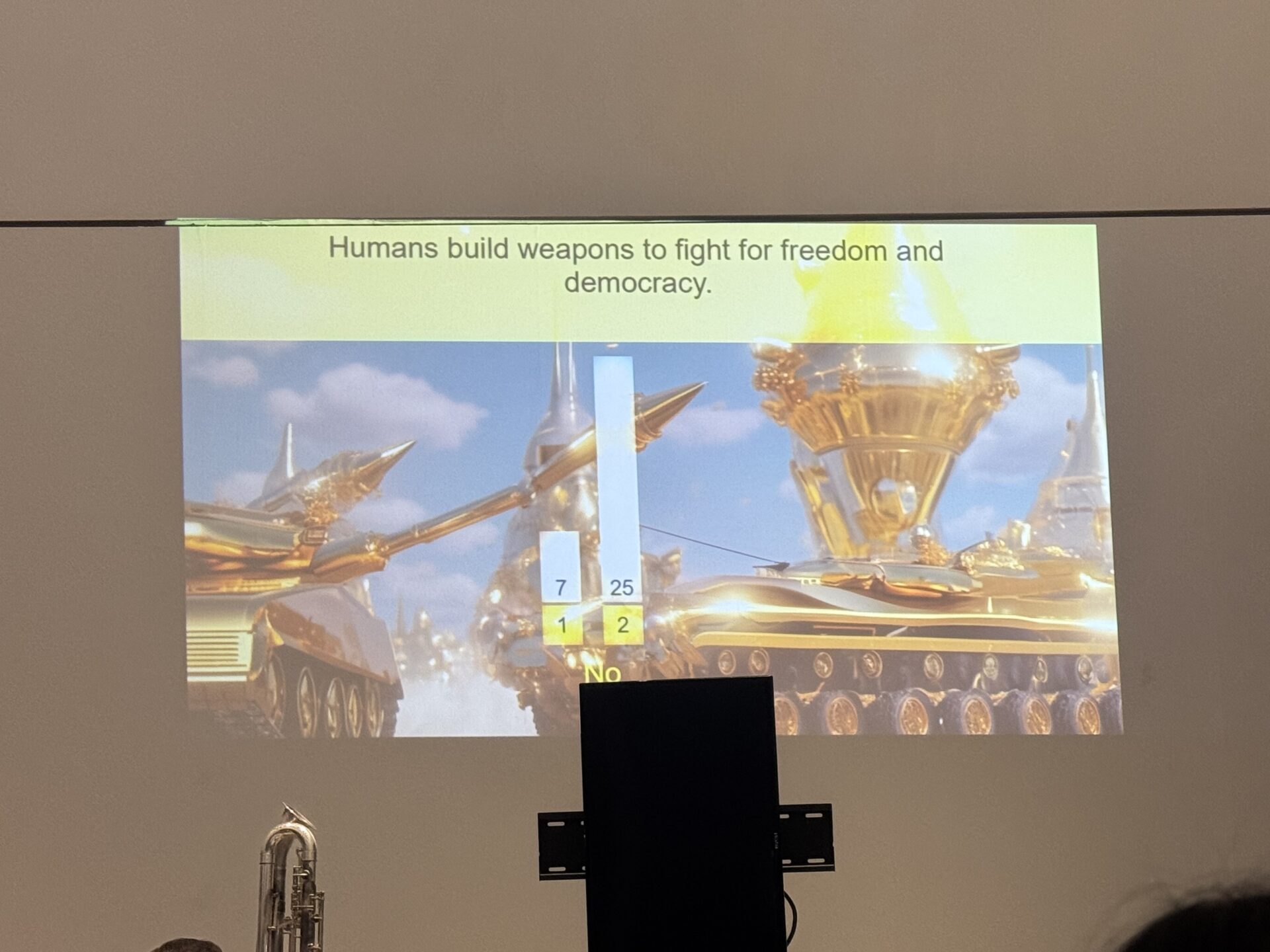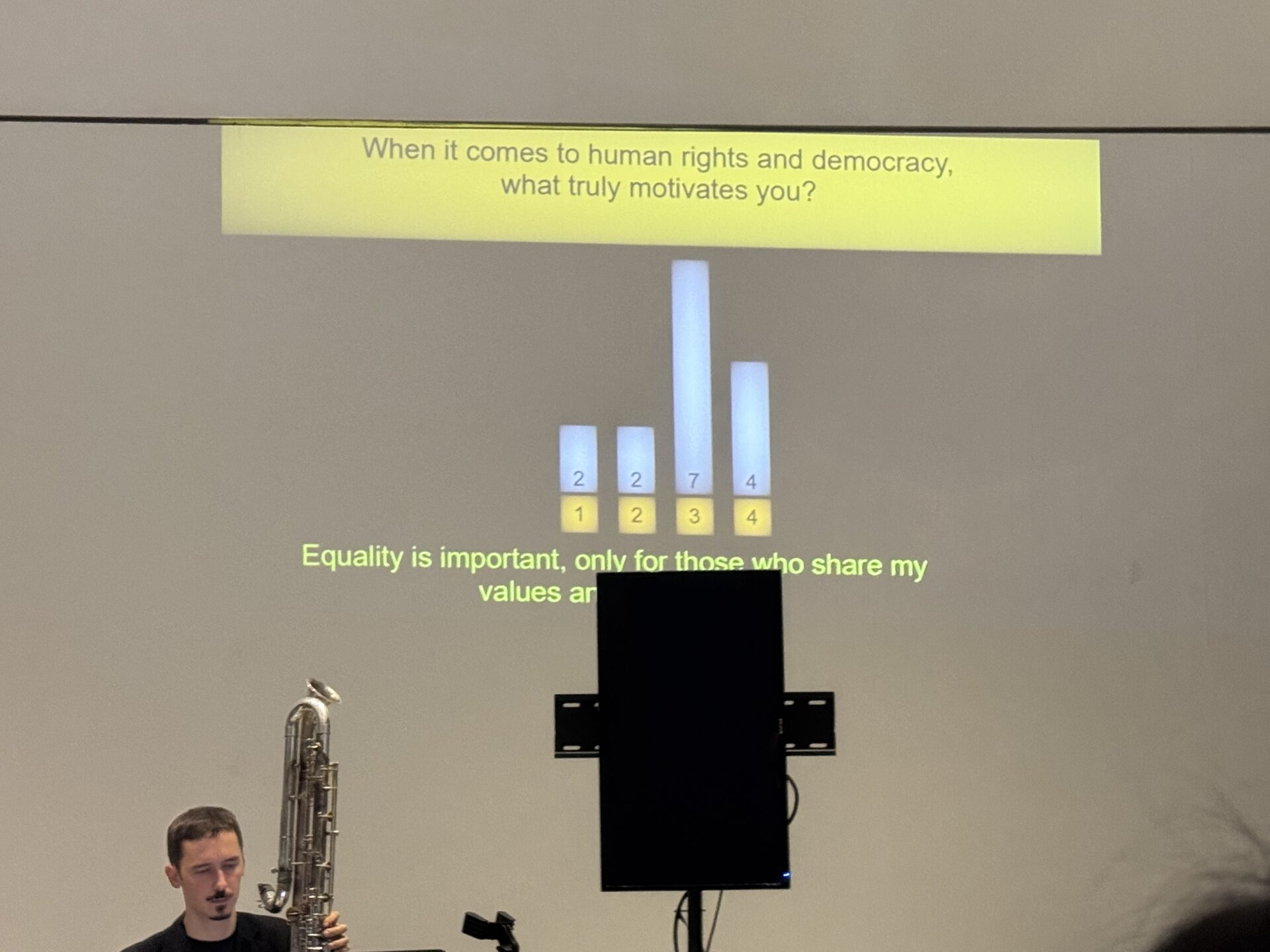+ WHAT?
Exploring Collective Urban Responsibility through Participatory AI-Driven Climate and Moral Scenarios
+ HOW?
Real-Time AI-Driven Audiovisual Feedback and Data-Informed Adaptive Music Theatre
Uncanny Reverie is an interactive music-theatrical work within a M.A.R.S. universe, merging artificial intelligence, dark satire, bitter humour and climate narratives into a participatory live experience. Set in a surreal, bling-bling dystopia inspired by urban decadence, the project stages a twisted game show where contestants face life-or-death questions about “saving the world.” Through this absurd setup, it reveals the contradictions of modern urban life; between technological progress, moral collapse, and the illusion of control.
The performance challenges the audience to reflect on collective responsibility and urban complicity in climate and social crises. As spectators actively vote via a custom app, their choices alter the storyline, sound, and visuals in real time, making them direct participants in shaping the city’s metaphorical collapse. The project addresses the challenge of communicating environmental urgency without alienation, combining irony and empathy to make complex climate data tangible. It reimagines urban resilience through a speculative lens, transforming the stage into a reflection of cities driven by greed, spectacle, and disconnection, yet still yearning for meaning.
Collaborations
Musicians and Ensemble: Ensemble NAMES, Performed adaptive collage scores reacting to audience data.
AI-driven performance; participatory music theatre; immersive storytelling; dark humour & satire; twisted narrative design; urban dystopia; data-driven composition; audience participatory performance design
Design Methods & Frameworks
The methodology blends theatrical composition, live audience participation, and environmental storytelling with satire and dark humour. The creative process involved developing an “authentically artificial” aesthetic: hyper-stylized visual and musical exaggeration that reveals emotional and societal truths through artifice. To implement this approach, the team employed a set of specialized tools and systems that translate audience input into real-time audiovisual experiences:
- AI Audio-Visual System: An interactive AI generator produces real-time visuals and music based on live audience input, transforming voting data into evolving projections and electronic soundscapes.
- Audience App: A custom-designed mobile interface allows audiences to vote and influence the performance’s narrative, musical structure, and visual design, creating an adaptive dramaturgy.
- Data-Driven Composition: Audience voting results feed into pre-composed collage scores displayed on each musician’s iPad, ensuring a unique configuration for every performance.
Scenarios / Tests / Exhibitions:
Uncanny Reverie was tested through a pilot performance designed as live experiments in audience interactivity and data-driven composition. Each performance established a real-time feedback loop: audience members used their smartphones to vote on moral and ecological dilemmas, directly influencing the score, visual projections, and narrative progression. The system integrated an AI generator, a custom audience voting app, and data-driven musical scores displayed on each musician’s iPad.
At public previews, the performance was presented in a concert format, combining live musicians, projections, and audience participation. While the structure successfully demonstrated the concept’s interactivity, feedback revealed that the venue’s non-immersive environment limited full engagement. Audiences expressed strong interest in a more enveloping setup, suggesting that a spatially immersive “game-room” installation could heighten the sense of participation. Participants found the experience both unsettling and empowering, describing it as a social experiment set within a dystopian world. The dynamic between individual and collective decision-making became a core feature: spectators were highly engaged in seeing which answers received the majority vote, often debating whether others voted honestly or ironically. This exposed the project’s psychological dimension: how collective behavior unfolds in performative, digitally mediated spaces.
Future Application
A future version could expand the system into a standalone interactive installation, where the entire soundscape and visuals are generated by audience voting in real time, without the need for live performers. A shared interface, such as a large touchscreen or projection-based voting wall, could make collective input visible and immediate, enhancing the social and spatial aspects of participation.
Lessons learned:
Testing revealed several key insights:
– The concert format limited immersion; an installation environment better suits the project’s interactive aims.
– The app requires improved cross-device compatibility and a more intuitive user interface.
– Audience agency is crucial: participants desired greater stakes and consequences within the game structure, suggesting a need for a more advanced app that includes elements of risk, reward, and narrative consequence.
Overall, these pilot performances demonstrated the project’s potential as a hybrid model of participatory music theatre and interactive urban installation – bridging collective behavior, technology, and environmental storytelling.
Artistic, Social, and Urban Contributions:
Uncanny Reverie demonstrates how AI and immersive media can translate complex moral storytelling into deeply engaging, emotionally resonant experiences, participatory art. By merging artificial visualization with live performance, the project reflects on urban apathy, technological dependency, and collective moral fatigue. It situates the audience within the very systems it critiques- using interactive voting, sound, and visuals as a social mirror of contemporary urban life. The work translates abstract environmental and ethical questions into shared, affective experiences, fostering awareness of how digital and ecological systems shape collective behaviour in cities.
Adaptability / interoperability:
The project’s modular design – integrating a custom audience app, an AI-driven audiovisual generator, and an adaptive score interface: allows for easy adaptation to other artistic or research contexts. Its framework can be applied to exhibitions, XR installations, participatory music theatre, or educational programs exploring data ethics, sustainability, and civic engagement. Artists, urban researchers, and educators can build upon its methodology to design new participatory systems or hybrid performances. By merging speculative performance with digital interactivity, Uncanny Reverie offers a scalable and interdisciplinary platform for reimagining the future of collective experience in technologically mediated urban environments.
Impact
This hybrid system fostered a new mode of performance-making, integrating AI as an active dramaturgical partner. It expanded participatory music theatre formats and demonstrated how digital tools can deepen public engagement with climate and urban issues through emotionally resonant interactivity.
